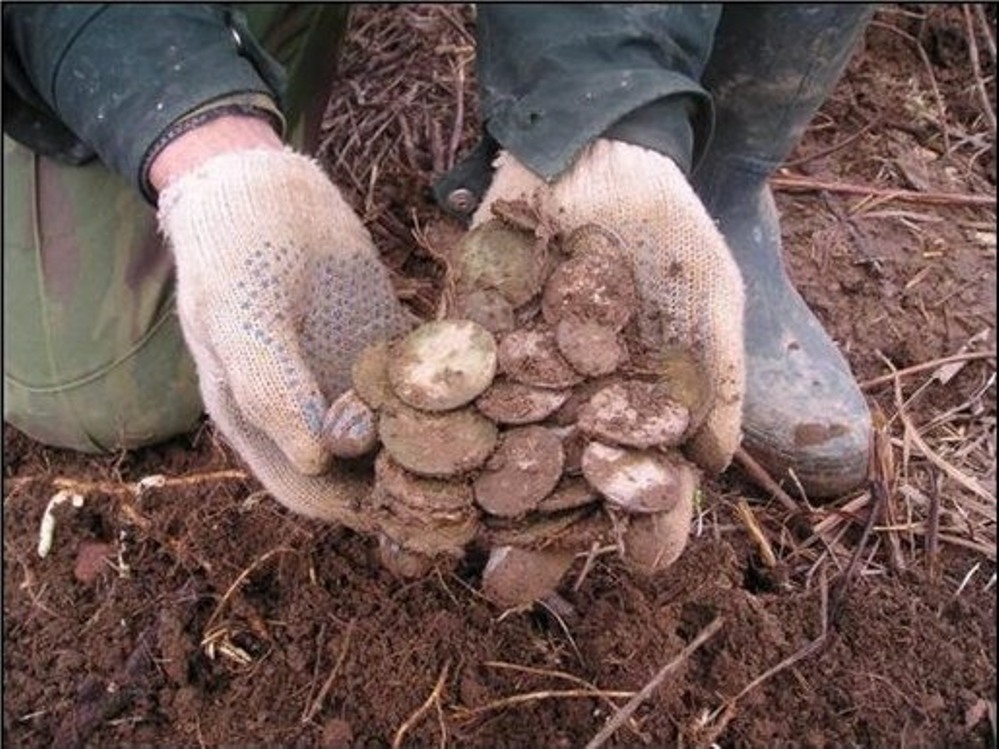Oriental coins (VII-XXI century)
 The conquerors of the territories that previously belonged to Byzantium were not familiar with the coinage before the reign of Muhammad, and therefore the history of the Arab coinage begins with imitation of coins of the Byzantine and Sassanian type. In part, these imitations were a rather loose interpretation of the original. Along with them, images of the ruling caliphs were minted on Arab coins.
The conquerors of the territories that previously belonged to Byzantium were not familiar with the coinage before the reign of Muhammad, and therefore the history of the Arab coinage begins with imitation of coins of the Byzantine and Sassanian type. In part, these imitations were a rather loose interpretation of the original. Along with them, images of the ruling caliphs were minted on Arab coins.
Around 696-698, Caliph Abdul-Malik ibn Mervan from the Umayyad dynasty (685-705) carried out a reform of the eastern monetary system. As a standard gold coin, a dinar (from the Latin. “Denarius”), having a standard weight of 4.25 grams, was introduced instead of solid. As a silver coin dirham (formed from the Greek. “Drachma”) replaced the Sassanian drachma. Its weight was 2.86 grams. Small eastern coins for local money circulation were minted from copper – falses (formed from the Latin. “Follis”).
Due to the fact that the image of people and animals is forbidden in Islam, since the times of the Umayyad Oriental coins, as a rule, contained only textual information representing exact extracts from the Koran, as well as an indication of the place and year of minting and the name of the ruling caliph (the last 786-787 on silver coins). The year of minting was indicated in accordance with the Islamic calendar, starting from the year of the Hijra, that is, the year of the flight of the Prophet Muhammad from Mecca to Medina. The beginning of the Hijra era dates back to July 16, 622 AD. Islam uses the lunar calendar, according to which the year consists of 336 days. It is easiest to calculate the corresponding date of the Christian calendar using the following formula: (Hijri year – 3.03%) + 622 = AD. Thanks to such extensive information, Islamic coins are an excellent means of establishing the age of archaeological finds and important historical evidence. In the IX-X centuries, the Arab Caliphate broke up into various ruling dynasties. For a collector, this means the formation of multiple areas of collectibles. Oriental coins can be collected for different eras – from the Middle Ages to the New Age, and by territorial affiliation – from Europe to North Africa and Asia. In this regard, it is worth mentioning the eastern coins of the Hafsid state in Tunisia (1229-1574), the Cordoba Caliphate (929-1031), the Ottoman Empire (from about 1299 to 1923), as well as Mongolia, Seljuk and Zangidov.
Coins of the Kushan kingdom, which had great influence in Central Asia and Northern India from the 1st to the 3rd century AD The heirs of the Indo-Greek and Indo-Scythian kingdoms made a great contribution to the development of a variety of gold coins, indicating the welfare of the rulers to this day. At the latest, with the beginning of the rule of King Vima Kadfiz (c. 90-100), a standardized image was minted on Kushan eastern coins. On the obverse, the figure of the ruler standing next to the altar was depicted on the obverse, and on the reverse was an image of a deity, usually Iranian. Along with gold coins (stater), for everyday money circulation, coins of bronze and copper (ass and drachma) were minted.
In the first approximation, a novice collector may be frightened off by foreign inscriptions of oriental coins. However, due to the fact that the Eastern monetary business was very clearly structured and there is a special, often well-illustrated literature in this area, having practiced a little, the collector will be able to achieve the intended goals rather quickly.
Immerse yourself in the delightful world of minting oriental coins.





